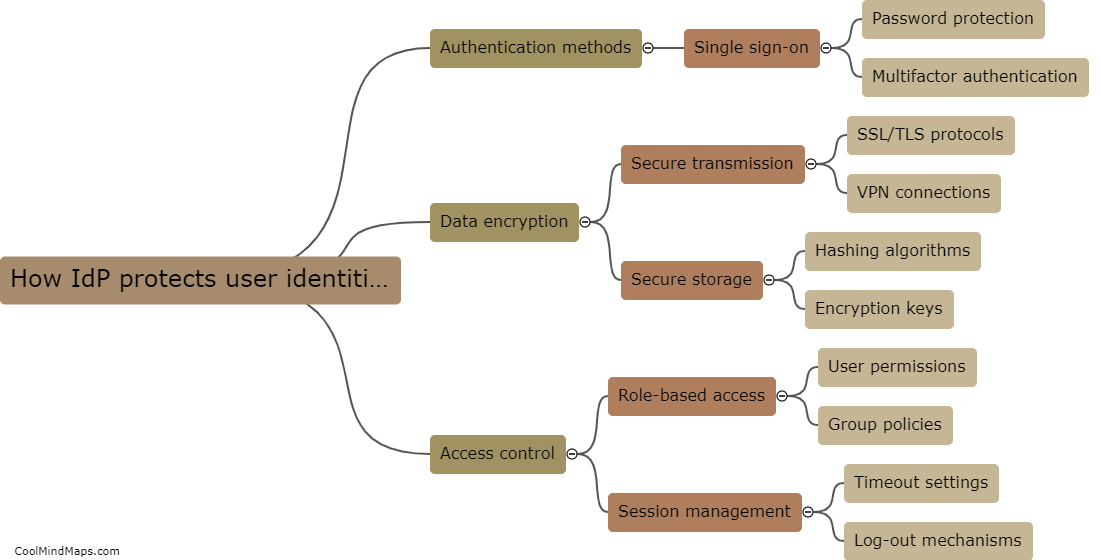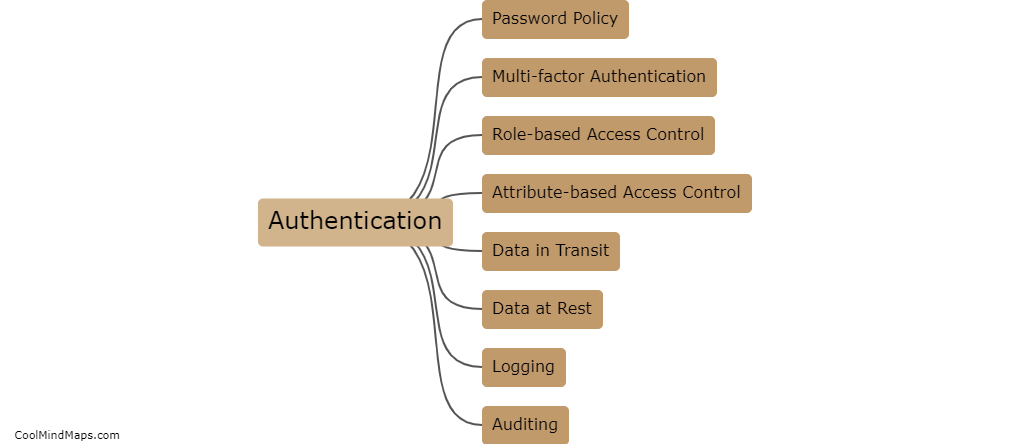How does an IdP protect user identities?
An Identity Provider (IdP) protects user identities through a variety of security measures. One key method is by securely storing and managing user authentication credentials, such as usernames and passwords, using encryption and hashing techniques to prevent unauthorized access. IdPs also employ multi-factor authentication, requiring users to verify their identities using a combination of factors, such as passwords, security tokens, or biometric data. Additionally, IdPs monitor for suspicious activity and employ security protocols, such as SSL/TLS encryption, to safeguard user information during the authentication process. These measures help prevent unauthorized access and protect user identities from potential threats and attacks.

This mind map was published on 31 July 2024 and has been viewed 53 times.











